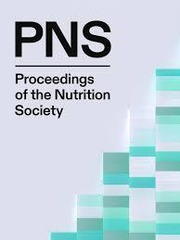No CrossRef data available.
Article contents
Maximum nutrition, minimum waste - exploring the acceptability of 'root-to-tip’ dining amongst consumers in a higher education institution
Published online by Cambridge University Press: 09 October 2025
Abstract
Foodservice provision is a key contributor to both dietary intake and food waste production(1). The development of ‘root-to-tip’ recipes in foodservice that incorporate more of the plant (i.e. peels and stalks) is being explored to reduce the climate impact of food waste(1) and improve suboptimal population intakes of fruits and vegetables, which provide useful sources of dietary fibre associated with lower risk of all-cause mortality(2). However, given low peels and stalks consumption in the UK(3), the extent to which ‘root-to-tip’ dishes may just shift food waste along the supply chain by increasing plate waste is unknown. The aim of this study is to understand the acceptability of ‘root-to-tip’ dining by exploring consumer attitudes towards food waste and perceived barriers and enablers to eating peels and stalks.
In-person focus groups were conducted at a UK university with current students and employees. Convenience sampling was used to recruit between five to eight participants across six focus groups. A semi-structured topic guide with open-ended questions was developed to facilitate discussion. Discussions were audio recorded, transcribed verbatim and an inductive thematic analysis undertaken. The research protocol was approved by the King’s College London Research Ethics Committee (Ref: MRA-24/25-46016; LRS/DP- 24/25-46017)
Six focus group discussions were conducted with forty participants (November 2024 to January 2025), primarily aged 18-25 years (53%) and female (75%). Six preliminary themes were identified: 1) food waste as a structural issue; 2) personal food waste awareness and the intention-behaviour gap; 3) the role of social modelling in ‘root-to-tip’ behaviours; 4) safety and edibility concerns around peels and stalks; 5) knowledge as a facilitator for ‘root-to-tip’ adoption; and 6) the importance of sensory appeal. These themes illustrate consumers’ perception of food waste as primarily occurring up the supply chain prior to the preparation stage, with structural barriers to its reduction. Participants perceive a growing societal and personal consciousness of food waste and desire to reduce its associated negative consequences. However, results highlight social and personal barriers, such as cost and convenience, which may contribute to an intention-behaviour gap. These barriers were referenced regarding the use of peels and stalks specifically, with upbringing, social modelling and food habits described as factors influencing consumption. Improving awareness of the safety and edibility of peels and stalks and practical knowledge related to their use may facilitate adoption of ‘root-to-tip’ behaviours. Anticipation of an unappealing sensory experience was described as a deterrent for consuming ‘root-to-tip’ dishes. Therefore, ensuring ‘root-to-tip’ dishes have sensory appeal is important to increase acceptability and prevent plate waste.
Our findings contribute to the understanding of attitudes towards food waste reduction practices at the preparation stage, in particular the use of peels and stalks, and highlight a need for increased knowledge to facilitate behaviour adoption.
Information
- Type
- Abstract
- Information
- Proceedings of the Nutrition Society , Volume 84 , Issue OCE4: Nutrition Society Conference 2025, 1-2 July 2025 , August 2025 , E253
- Copyright
- © The Author(s), 2025. Published by Cambridge University Press on behalf of The Nutrition Society


